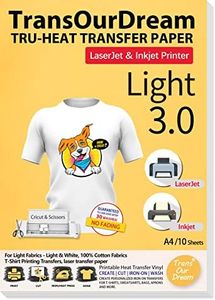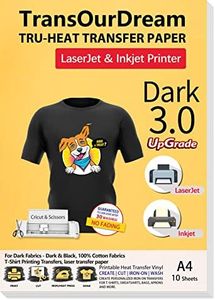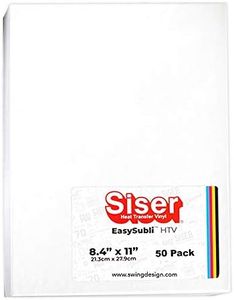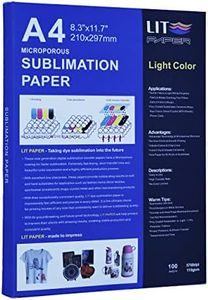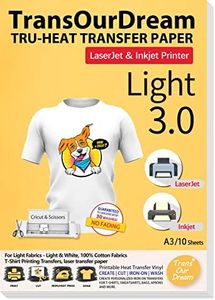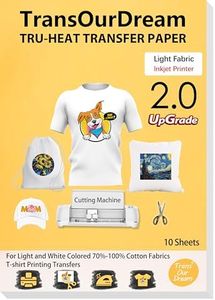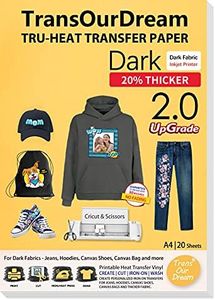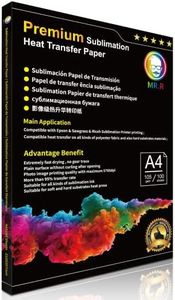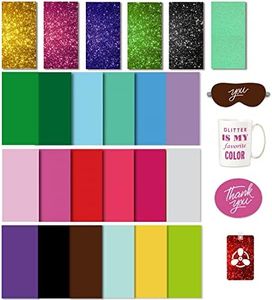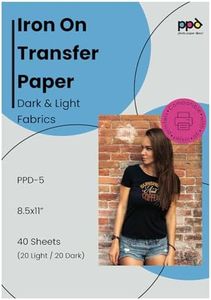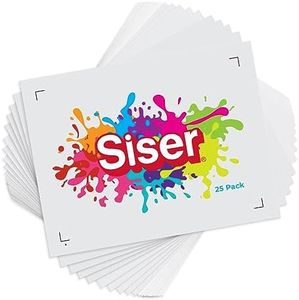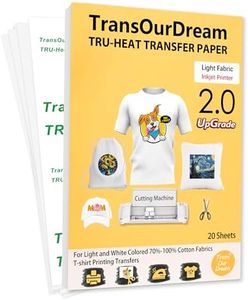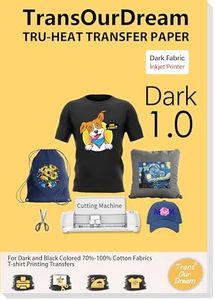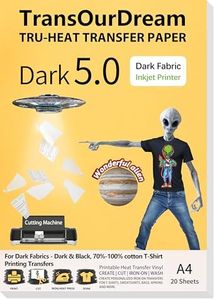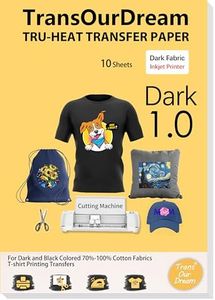We Use CookiesWe use cookies to enhance the security, performance,
functionality and for analytical and promotional activities. By continuing to browse this site you
are agreeing to our privacy policy
10 Best Heat Transfer Papers
From leading brands and best sellers available on the web.Buying Guide for the Best Heat Transfer Papers
Choosing the right heat transfer paper is all about matching the product to both the type of printer you have and the fabric you want to decorate. Heat transfer papers allow you to print designs using your home or office printer and then transfer the image onto a shirt, tote bag, or other fabric item with a heat press or household iron. To pick the best fit, consider the material you're working with, the type of printer you own, and the kind of design you want to create. Each paper type has its own strengths and is designed for different needs—so understanding the basics will help you achieve the best results.Printer CompatibilityPrinter compatibility refers to whether the heat transfer paper is designed for use with inkjet or laser printers. This is crucial because the coating and chemical makeup of the paper are matched to the inks and heat generated by the specific printer type. Using the wrong paper can result in poor transfers or even damage to your printer. Most heat transfer papers are clearly labeled for inkjet or laser, and you should always choose the kind that matches your printer at home.
Fabric Compatibility (Light vs. Dark Fabric Paper)Heat transfer papers are usually made specifically for either light or dark colored fabrics. Papers for light fabrics work best when the shirt or textile is white or pale; the design’s colors will appear vibrant, but the paper’s white background can be almost invisible once transferred. For dark fabrics, you need transfer paper that has an opaque white layer so designs show up clearly and look bold, even against strong colors. Picking the right paper based on your fabric color is essential to achieving a professional look.
Image Opacity and QualityThis refers to how well the transferred image stands out against the fabric and how sharp or vibrant the colors appear after transfer. Higher quality papers generally preserve detail better and resist fading or washing out. Some papers are formulated for higher opacity, meaning they block out the underlying fabric’s color more effectively, which is particularly important when working on colored or patterned materials. If you want bright, detailed images, prioritize image quality and opacity in your selection.
Ease of Peeling (Hot Peel vs. Cold Peel)After using heat to transfer your design, you must peel off the backing sheet. Some papers are meant to be peeled when hot (hot peel), while others need to cool down first (cold peel). Each choice affects the finish and how easy the transfer process is: hot peel papers typically give a softer feel but may be trickier for some beginners; cold peel papers often yield a glossier, durable finish. If you’re new to heat transfer, pay attention to this for convenience and end-result preference.
Durability and WashabilityDurability describes how well the transferred image withstands repeated washing and wearing. Some papers are more resistant to cracking, peeling, or fading over time. If you’re making clothing that will be washed regularly, like T-shirts, look for papers labeled as highly durable or suitable for frequent washing. For craft projects or occasional-use items, standard durability might be sufficient. Matching durability to the fabric’s intended use is key for lasting results.
Finish (Matte vs. Glossy)Finish refers to whether the transferred design looks matte (non-shiny) or glossy (shiny) once applied. The finish affects not only the look but sometimes the feel of the design on the fabric. Matte finishes are more subtle and less reflective, often preferred for everyday wear, while glossy finishes can appear more vibrant and eye-catching but may highlight minor imperfections. Your choice here depends on personal taste and the style you want to achieve.
